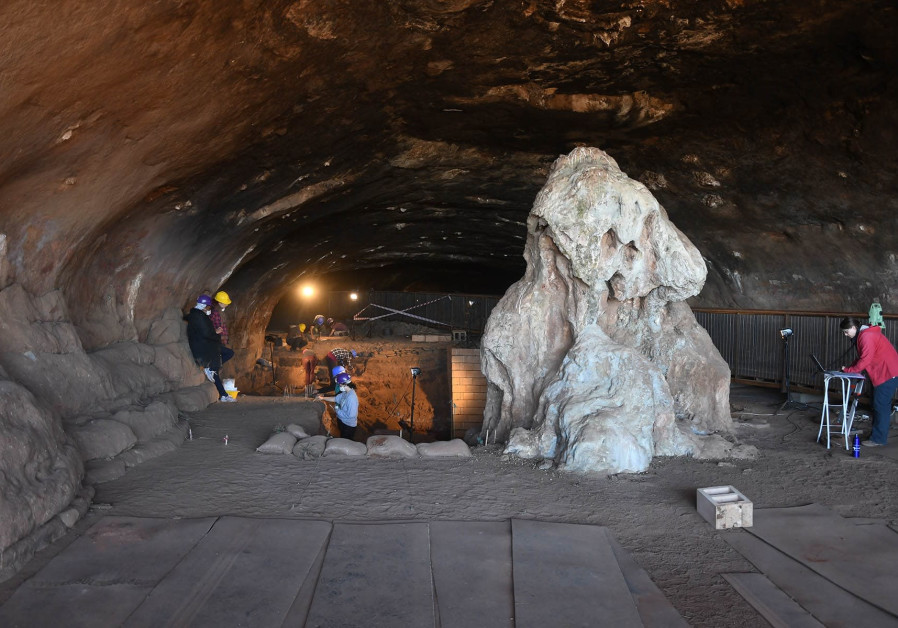A group of scholars from the Hebrew University of Jerusalem and the University of Toronto has unearthed traces of human activity dating back millions of years in the Wonderwerk Cave in South Africa’s Kalahari Desert. The findings were published in the May issue of the Quaternary Science Reviews.
The cave, whose name means “miracle” in Afrikaans, offers some of the earliest evidence of the use of fire and tool production.
The new study employed paleomagnetism and burial dating to scan 2.5-meter-thick sedimentary layers containing ash and remains of animals, tools and fires.
“We can now say with confidence that our human ancestors were making simple Oldowan stone tools inside the Wonderwerk Cave 1.8 million years ago,” Prof. Ron Shaar of Hebrew University’s Institute of Earth Sciences said in a press release.

Oldowan pebble choppers, scrapers and hand axes are the oldest tools produced by humans. They usually consisted of crudely worked chopping tools whipped in two directions.
“Wonderwerk is unique among ancient Oldowan sites, a tool-type first found 2.6 million years ago in East Africa, precisely because it is a cave and not an open-air occurrence,” Shaar said.
Attributing traces of fires in open-air environments to human activity is more challenging because the influence of natural wildfires cannot be definitely ruled out.
Paleomagnetism is the study of magnetic rocks and sediments to document the history of the earth’s magnetic field, which has implications for a wide range of issues, including climate change and navigation systems.
When objects containing magnetic minerals burn at a very high temperature, the minerals are re-magnetized and record the direction and magnitude of the field at that precise moment.
While the direction of the earth’s magnetic field has pointed to geographic north in the modern era, it used to be completely neutral or even pointing south.
“We carefully removed hundreds of tiny sediment samples from the cave walls and measured their magnetic signal,” Shaar said. “Our lab analysis showed that some of the samples were magnetized to the south instead of the north, which is the direction of today’s magnetic field. Since the exact timing of these magnetic ‘reversals’ is globally recognized, it gave us clues to the antiquity of the entire sequence of layers in the cave.”
The remains offered testimonies of the first deliberate use of fire and production of more sophisticated tools, hand axes, about a million years ago.
They were also analyzed according to a second method to confirm the results.
“Quartz particles in sand have a built-in geological clock that starts ticking when they enter a cave,” said Prof. Ari Matmon, director of Hebrew University’s Institute of Earth Sciences. “In our lab, we are able to measure the concentrations of specific isotopes in those particles and deduce how much time has passed since those grains of sand entered the cave.”
The findings of the study have far-reaching implications for understanding not only more about the vicissitudes of Wonderwerk Cave and ancient human evolution, but also about present-day challenges, the press release said.
“With a timescale firmly established for Wonderwerk Cave, we can continue studying the connection between human evolution and climate change and the evolution of our early human ancestors’ way of life,” the University of Toronto’s Prof. Michael Chazan and Liora Kolska Horwitz of Hebrew University’s National Natural History Collections said in a joint statement.
